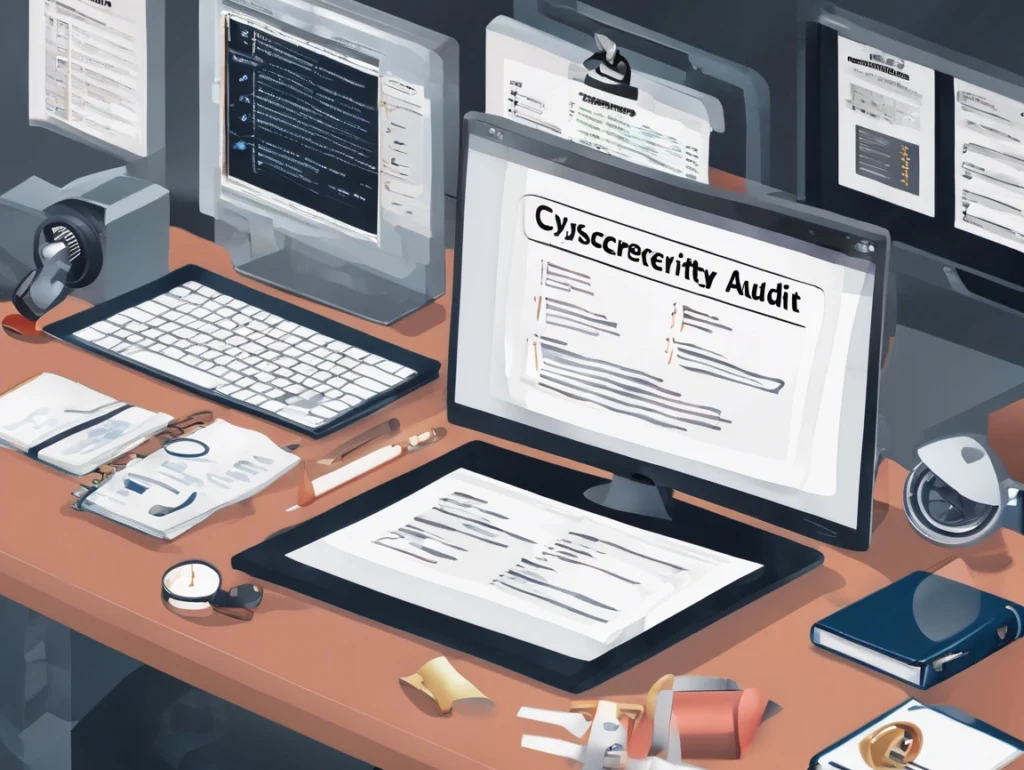Preparing a small business for a cybersecurity audit involves a blend of technical readiness, policy documentation, and employee awareness. Here’s a checklist-style guide to help you get audit-ready:
A cybersecurity audit is not just a checkbox—it’s your frontline defense against growing cyber threats. Whether you’re facing compliance requirements (like ISO 27001, HIPAA, or PCI-DSS) or simply want to protect your data, our cybersecurity audit services help small businesses like yours stay secure and ahead of the curve.

What Is a Cybersecurity Audit?
A cybersecurity audit is a comprehensive review of your organization’s information systems, policies, and practices to identify vulnerabilities, ensure compliance, and improve overall security posture.
We help you:
Identify and fix security gaps
Meet industry-specific compliance requirements
Protect customer data and business continuity
Improve risk management and incident response
Cybersecurity Audit Preparation Checklist
1. Understand the Scope of the Audit
Know what type of audit it is (internal, external, regulatory compliance: e.g., ISO 27001, NIST, HIPAA, PCI-DSS).
Identify systems, departments, and data involved.
2. Policies and Documentation
✅ Information Security Policy
✅ Acceptable Use Policy
✅ Data Classification Policy
✅ Incident Response Plan
✅ Business Continuity and Disaster Recovery Plan
✅ Vendor Risk Management Policy
✅ Change Management Policy
Make sure these documents are updated, approved by leadership, and accessible.
3. Access Controls & User Management
Review and document:
✅ User access controls (least privilege)
✅ Password policies (complexity, expiration, MFA)
✅ Termination process (how access is revoked)
✅ Role-based access assignments
4. Network and Infrastructure Security
Document your:
✅ Firewall configurations
✅ Network segmentation (e.g., guest vs. internal Wi-Fi)
✅ Remote access policies (VPN, MFA)
✅ Endpoint protection (antivirus, EDR)
5. Asset Inventory
Maintain an up-to-date list of:
✅ Hardware assets (servers, laptops, mobile devices)
✅ Software assets (OS, apps, licenses)
✅ Cloud services (SaaS, PaaS)
6. Patch Management
Show evidence of:
✅ Regular OS and application updates
✅ Vulnerability scans and remediation steps
✅ Patch management policy
7. Employee Training & Awareness
✅ Conduct regular security awareness training
✅ Phishing simulations (optional but valuable)
✅ Training records and attendance logs
8. Incident Response Readiness
✅ Have a documented and tested IR plan
✅ Ensure employees know how to report incidents
✅ Include contact details, escalation paths, and roles
9. Data Backup and Recovery
✅ Backup frequency and scope (full, incremental)
✅ Offsite or cloud backups
✅ Periodic restore testing
✅ Documented backup policy
10. Audit Trail and Logging
✅ Enable and retain logs for critical systems
✅ Store logs securely (SIEM preferred)
✅ Set appropriate retention periods
11. Compliance and Legal Requirements
✅ Map out applicable laws (GDPR, CCPA, HIPAA, etc.)
✅ Ensure consent/collection processes are documented
✅ Have breach notification procedures in place
12. Pre-Audit Internal Review
Conduct a mock audit or internal review.
Assign roles for audit interviews.
Review past audit findings and fixes.
Why Small Businesses Need Cybersecurity Audits
Small businesses are increasingly targeted by cybercriminals because they often lack the resources of large enterprises. One breach can lead to:
Data loss
Financial penalties
Reputation damage
Business disruption
A regular cybersecurity audit helps you stay proactive, not reactive.
TEKYHOST Cybersecurity Audit Process
We offer a structured, hands-on approach tailored for small business environments:
Initial Consultation – Understand your business, industry, and goals
Scope Definition – Identify which systems, data, and teams will be reviewed
Vulnerability Assessment – Scan networks, devices, and cloud environments
Policy & Compliance Review – Check security policies, access controls, and training
Incident Response Evaluation – Ensure your team is ready for threats
Reporting & Recommendations – Clear, jargon-free reporting with prioritized fixes
🔒 What We Check
Access control & password policies
Firewall, antivirus & endpoint protection
Backup & disaster recovery plans
Employee awareness & phishing resilience
Cloud service configurations
Patch management & software updates
Looking for cybersecurity audit?
Talk to us about your current business needs and future IT goals, so we can help choose the right technology to move your business forwards.
